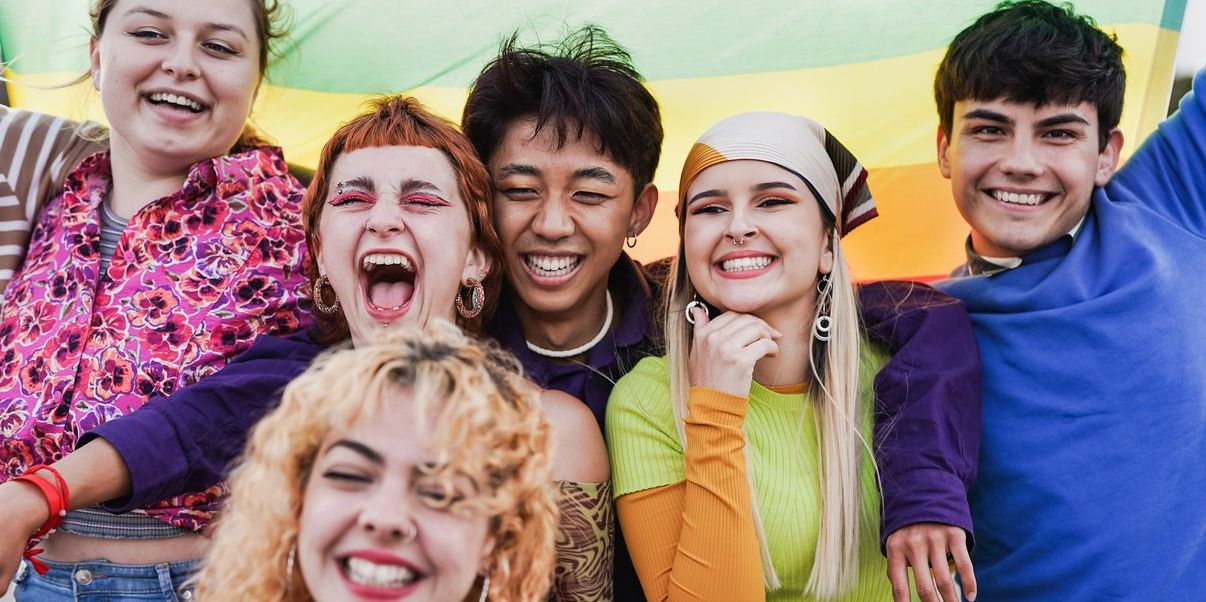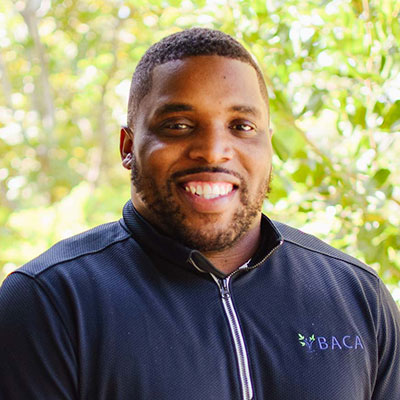Summary: Pride Month 2025 is this year’s edition of an annual, month-long event organized to increase awareness and expand understanding about members of the LGBTQIA+ community.
Points of Pride:
-
- This is the 55th Annual Pride Month
- Pride Month began in 1970 in response to the Stonewall Riots of June 1969
- In 2025, there will be Pride Celebrations and/or Pride Marches in all 50 states in the U.S.
- In 2023, there were Pride Celebrations and/or Pride Marches in over 100 countries worldwide
- Watch footage from the first Pride March here
Pride Month 2025: Pride Belongs Here
Something important to understand about Pride Month is that there’s not one organizing entity that decides where, when, and how people celebrate it. Part of the magic of Pride is that it shows us what happens when millions of people from all walks of life come together for one purpose: taking pride in living their truth.
This year, The Trevor Project – an organization dedicated to supporting the LGBQIA+ community – established a simple theme to unify Pride Month participants:
“Pride Belongs Here.”
This theme is a way of reaffirming the intrinsic value of every human and highlighting the fact that members of the LGBTQIA+ community can be proud to be proud, proud to live out loud, and proud to be who they are, living life as they choose. The organizers at the Trevor Project elaborate on this idea:
“Pride is here to stay, even if we all don’t celebrate the same way. By showing up as allies and supporters, we’re signaling to LGBTQ+ young people everywhere they are valued and have community, no matter where they’re from. Pride is more than a celebration — it’s a commitment to ensuring LGBTQ+ young people know that they’re not alone.”
This message takes on increasing importance in 2025. After decades of progress – admittedly, at times, taking one step forward and two steps back – 2024 saw a decrease in support for diversity in general, with several large companies eliminating or severely reducing their support of the LGBTQIA+ community, and Pride Month in particular, including:
- Amtrak
- Anheuser-Busch
- Boeing
- Citi
- Comcast/Xfinity
- Deloitte
- Goldman Sachs
- Lowe’s
- Mastercard
- Meta
- Nissan
- Pepsi
- PricewaterhouseCoopers
- Target
- Visa
- Walmart
We name these organizations not to censor their decisions, but rather to explain why, in 2025, we still need events like Pride Month. With prominent companies and corporations dialing back support for the LGBTQIA+ community in general and Pride Month specifically, it’s important for allies to stand up and remind the LGBTQIA+ community that we’re here for them and we’re not going anywhere.
The Need for Pride Month: Reducing Stigma and Discrimination, Protecting Mental Health
In many cases, the emotions associated with a direct, personal experience of stigma and/or discrimination can lead to an increase in symptoms associated with mental health disorders. In a special report published in 2023, the National Institutes of Health (NIH) published the following data on rates of depression and anxiety among youth and young adults in the LGBTQ+ community:
Anxiety and Depression: LGBTQIA+
Reported Symptoms of Anxiety:
- Age 13-17: 67%
- Age 18-24: 65%
Reported Symptoms of Depression:
- Age 13-17: 57%
- Age 18-24: 49%
When we see figures like this, we know we need to do more to support the LGBTQ+ community with the best evidence-based care available. A different report, this one published in 2024 by The Trevor Project, shared the answers to the following survey question:
How accepting of LGBTQIA+ people is the community where you currently live?
Here’s how LGBTQIA+ teens and young adults nationwide responded:
- Very unaccepting: 13%
- Somewhat unaccepting: 23%
- Somewhat accepting: 48%
- Very accepting: 16%
We know the LGBTQ+ community deserves better than that. They deserve respect and acceptance wherever they go. Mental health professionals can work every day to be part of the solution, create welcoming communities, and change the cultural climate to one of unconditional acceptance of all people and all colors of the rainbow
Pride Month 2025: Human Rights, Human Dignity
When we talk about equality, discrimination, and the LGBTQIA+ community, we need to remember the stakes are high. In a report published the Human Rights Campaign (HRC) on issues related to Pride Month, justice, discrimination, and the LGBTQIA+, Vice President Kamala Harris observed:
“Every year that we celebrate Pride, we must also remember all of what is at stake and recommit to fighting for the promise of America, which is a promise of freedom and equality and justice.”
And when we talk about equity and inclusion, we’re also talking about justice and one of our most basic human rights: our right, as U.S. citizens, to personal safety, and protection from violent crimes rooted in discrimination and bigotry.
We’ve made some progress, yes. However, in 2024, the HRC tracked anti-LGBTQIA+ hate crimes in the U.S., and found the following:
- 32 trans people were killed in targeted attacks associated with their gender identity:
- 78% people of color
- 56% black transgender women
- 63% died by gun violence
- 43% killed by a friend, family member, or romantic partner
- 38% subsequently dead-named or misgendered by the press or local police/authorities
Unchecked discrimination can have serious consequences, and lead to the type of violent behavior we see reflected in the statistics above. Therefore, when we talk about empathy, compassion, and understanding during Pride Month, we need to remember why: it can literally save lives.
The Power of Pride: Showing Up for Friends and Loved Ones
In May 2025, the Pew Research group published a report about participation in Pride Month among LGBTQIA+ adults. Let’s take a look at what they found.
Who Goes to Pride Events?
LGBTQIA+ Adults: 66%
- Once: 17%
- More than Once: 49%
Gay or Lesbian: 77%
- Once: 15%
- More than once: 62%
Bisexual: 57%
- Once: 18%
- More than once: 39%
Transgender: 68%
- Once: 18%
- More than once: 50%
We have to admit that we thought those numbers would be higher. However, this teaches us something we need to learn: why are the numbers lover than expected? We suspect that decades of discrimination act as a deterrent. While many members of the LGBTQA+ community are out, and willing to participate openly in Pride events, it’s possible that stigma and discrimination can explain why a third of LGBTQIA+ adults choose not to participate in Pride events.
With that said, let’s look at participation among non-LGBTQIA+ adults.
Who Else Goes to Pride Events?
Non-LGBTQIA Adults: 16%
- Once: 7%
- More than once: 9%
- By age group:
- Under 50: 23%
- 50+: 9%
Again, we expected more participation than that. What these figures teach us is that non-LGBTQIA+ adults can get out to Pride Festivals and parades more often. Because here’s a fact: if you’re living on this earth, you know LGBTQIA+ people. And the older you are, the more you LGBQIA+ people know, whether you know it or not.
Which brings us to our final topic: how do we learn more, in order to become better advocates for the LGBTQIA+ community during Pride Month?
Let’s take a look at data on the topic from the same Pew Research report.
Who Knows About LGBTQIA+ History?
(% of LGBTQIA+ adults who say they’re very well informed about LGBTQIA+ History)
- LGBTQIA+ Adults: 32%
- Gay or Lesbian: 40%
- Bisexual: 23%
- Transgender: 47%
- By age group:
- 18-29: 28%
- 30-39: 30%
- 40-49: 29%
- 50-59: 32%
- 60+: 46%
That’s an informative set of data. Not only do non-LGBTQIA+ people need to expand their understanding of LGBTQIA+ history, but LGBTQIA+ people do, too: over 2/3rds say they aren’t very well informed on LGBTQIA+ history. There’s an easter egg there, though, that teaches us who we should ask about LGBTQIA+ topics: older LGBTQIA+ people.
Let’s check that conclusion against data from the same Pew report.
Where Do People Learn About LGBTQIA+ Topics?
- Online: 60%
- From LGBTQIA+ friends/acquaintances: 51%
- Television/movies: 36%
- School: 8%
If you’re here, online, learning about Pride Month, you’re with most of us. If you learn about LGBTQIA+ topics from LGBTQIA+ friends, you’re also in the majority, albeit a smaller one – and we think that’s the best way to learn about a topic like this: from the lived experience of a member of the LGBTAIQ+ community.
To find a Pride Event near you, click here, or keep your eye on this blog for our next post for Pride Month: A List of All the Pride Events in the U.S., Canada, Mexico, and Puerto Rico for Pride Month 2025.
LGBTQIA+ Helpful Resources and Links
The following resources can help LGBTQIA+ people and allies find support, information, and guidance fr all things related to LGBTQIA+ mental and behavioral health:
- The National Alliance for Mental Illness (NAMI) LGBTQIA+ resource page
- The Association of Gay and Lesbian Psychiatrists provides an updated a directory of LGBTQIA+ friendly therapists.
- The Gay, Lesbian, and Straight Education Network (GLSEN) is a valuable resource for all things LGBTQIA+
- The Trevor Project offers a wide variety of resources, from research, to helpful tips for LGBTQIA+ people, to real-time crisis support
- Depression Looks Like Me is a program designed to support members of the LGBTQIA+ community diagnosed with depression


